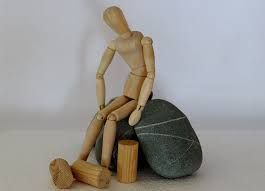Fear
The Walking Traumatized: Is This Life in the 21st Century?
Daily life and fear
Posted July 17, 2016

We are leading our daily lives traumatized...often not aware of the depth by which we are impacted by the shock of traumatic events. It is cumulative. It heightens our levels of anxiety. It builds a default internal setting of higher insecurity and fear. The 9/11 terrorist acts (on our own soil—something that in the US we are not familiar with) to the last 15 years filled with mass shootings to more recently the civilian and police killings, reflects a lot to be shocked. We are often aware of it; sometimes it lives beneath the surface.
Shootertracking.com (somewhat horrific in itself that this exists) found that there were 372 mass shootings in the US last year killing 475 people and wounding 1870 (a mass shooting is defined in which four or more people are killed or wounded).
Mind you, human beings have been historically violent creatures and therefore being exposed to traumatic events is not new. The difference is that information (television, Internet, and social media) creates multiple exposure and repetition. The 24/7 news outlets compete for eyeballs and run these stories over and over capturing our attention but in the process contributing to the recreation of the ongoing shock. These ongoing reports and images of death, violence, and loss leave many feeling hopeless, helpless, and traumatized. And a natural human response is to be traumatized.
The purpose of terrorist acts is to terrorize. Mission accomplished.
The term trauma is often used in daily language to exaggerate an unpleasant experience. The American Psychological Association has a useful and accessible definition of clinical trauma: “ … an emotional response to a terrible event like an accident, rape or natural disaster. Immediately after the event, shock and denial are typical. Longer term reactions include unpredictable emotions, flashbacks, strained relationships and even physical symptoms like headaches or nausea. While these feelings are normal, some people have difficulty moving on with their lives.”
The gap between these shocking and horrific acts and the demands of daily life creates a gap; a dissonance. It is a dissonance that is difficult to maneuver. What does one do when one knows fellow human beings have been barbarically killed and yet the tasks of daily life continue as if nothing happened: the groceries need to be bought; the house cleaned, and the dog walked. It doesn't make sense. And it cannot make sense.
We live within the context of our lives. So punishing oneself for what may seem to be superficial daily demands of life in comparison to such loss and tragedy is not useful.
What to do? It isn’t easy. Some people are able to recover more quickly; others of us taking it in more deeply. Here are some clinical approaches:
- Talk about it with friends, family, or a professional. You will find that others are also holding emotions about these events as well that make one feel less alone. Or don’t talk about the trauma and simply be with others. As social creatures we need this reassurance.
- Write about it. The act of taking something from the inside and putting it on paper (the outside) is therapeutic. This blog is my way of addressing my own upset, confusion, disorientation, and disbelief about the ongoing shocking events.
- Distract in constructive ways. It is important to reduce the fear and arousal that comes with trauma. Exercise, re-engage in hobbies, or even mobilize resources for change.
And lastly, try to keep one thing in mind: as you look at each of these horrific acts, there is another story: the story of people mobilizing themselves to take care of those hurt and wounded; of people coming together to push back and declare that terrorism is not congruent with living civilized lives.


